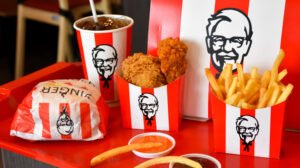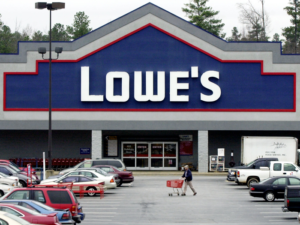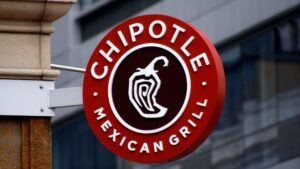Did you know that Coca-Cola, the iconic carbonated-drink manufacturing company, is valued at a staggering $257 billion as of writing? With such immense value, it’s no wonder that Coca-Cola is a dominant player in the beverage industry. But what makes this company stand out? Let’s delve into a comprehensive SWOT analysis of Coca Cola to uncover its strengths, weaknesses, opportunities, and threats.
Jump Ahead To :
Key Takeaways:
- Coca-Cola is valued at $74 billion, making it a powerhouse in the beverage industry.
- The company has a strong brand identity and value, with a global reach and the largest market share.
- Coca-Cola has successfully repositioned its portfolio and has an efficient distribution system.
- However, it faces competition with Pepsi, has low product diversification, and has been involved in infringement lawsuits.
- Coca-Cola also relies on third-party technology providers and has faced criticism for its environmentally destructive packaging.
Strengths of Coca-Cola
Coca-Cola, a global leader in the beverage industry, possesses several strengths that contribute to its ongoing success and market dominance.
Brand Identity and Value
Coca-Cola boasts a strong brand identity and value, recognized and loved by consumers worldwide. The brand’s iconic red and white logo, refreshing taste, and enduring legacy have established it as a symbol of quality and enjoyment. With its long-standing presence in the market, Coca-Cola has built a loyal customer base, reinforcing brand loyalty and trust.
Global Reach and Market Share
One of Coca-Cola’s key strengths is its unparalleled global reach. he company operates in more than 200 countries, with an extensive distribution network that spans across various channels, ensuring its products are readily available to consumers. This widespread presence allows Coca-Cola to capture a significant share of the global beverage market, maintaining its position as the industry leader.
Portfolio
Coca-Cola has successfully repositioned its product portfolio to adapt to changing consumer preferences and market trends. By introducing new beverage options, such as low-calorie and sugar-free alternatives, the company has expanded its offerings to cater to health-conscious consumers. This strategic portfolio management has helped Coca-Cola maintain relevance and sustain its market position.
Efficient Distribution System
Coca-Cola’s highly efficient distribution system is a key component of its operational success. The company has established strong partnerships with bottling and distribution companies around the world, allowing for swift and reliable product delivery. This efficient supply chain ensures that Coca-Cola products reach consumers in a timely manner, contributing to customer satisfaction and increased sales.
Profitable Acquisitions
Coca-Cola’s history is marked by successful acquisitions that have strengthened its market position and expanded its product offerings. By acquiring established brands such as Minute Maid, Powerade, and Costa Coffee, Coca-Cola has diversified its portfolio and tapped into new markets, further bolstering its competitive edge.

“Coca-Cola boasts a strong brand identity and value, global reach and the largest market share in the beverage industry. The company has successfully repositioned its portfolio and has a highly efficient distribution system.”
These strengths have positioned Coca-Cola as a powerhouse in the beverage industry, allowing the company to maintain its market dominance and continually adapt to changing consumer preferences. However, alongside these strengths, Coca-Cola also faces certain weaknesses and threats that must be carefully addressed to ensure sustained growth and success. In the following section, we will explore the weaknesses of Coca-Cola and how they can impact the company’s performance in the market.
Weaknesses of Coca-Cola
Despite its many strengths, Coca-Cola also faces a number of weaknesses that can impact its overall performance in the market. These weaknesses include:
- Intense competition with Pepsi: Coca-Cola faces fierce competition from its major rival, Pepsi, in the beverage industry. This competition puts pressure on Coca-Cola to constantly innovate and differentiate its products to maintain its market share.
- Low product diversification: Another weakness of Coca-Cola is its low product diversification. The company heavily relies on its core carbonated beverage offerings, which limits its ability to cater to changing consumer preferences and trends.
- Infringement lawsuits: Coca-Cola has been involved in several infringement lawsuits, which can harm its reputation and lead to financial losses. These lawsuits highlight the challenges the company faces in protecting its intellectual property.
- Dependence on third-party technology providers: Coca-Cola relies on third-party technology providers for various aspects of its operations, including manufacturing and distribution. This dependence can expose the company to risks related to quality control, supply chain disruptions, and intellectual property issues.
- Environmental criticism: Coca-Cola has faced criticism for its environmentally destructive packaging, particularly its extensive use of single-use plastic bottles. This criticism not only damages the company’s reputation but also poses a threat to its business as consumers and governments increasingly prioritize sustainability.
In order to address these weaknesses, Coca-Cola should focus on diversifying its product portfolio, strengthening its legal protection, reducing its dependence on third-party providers, and adopting more sustainable packaging practices.
“Product diversification and sustainable packaging are key areas where Coca-Cola needs to make significant improvements. By expanding its product offerings and reducing its environmental impact, the company can better position itself in the market and meet the evolving needs of consumers.” – Industry Analyst
In the following table, we summarize the weaknesses of Coca-Cola:
| Weaknesses of Coca-Cola |
|---|
| Intense competition with Pepsi |
| Low product diversification |
| Infringement lawsuits |
| Dependence on third-party technology providers |
| Environmental criticism |

Addressing these weaknesses is crucial for Coca-Cola to maintain its competitive edge and ensure long-term sustainability.
Opportunities for Coca-Cola
Coca-Cola, being one of the leading beverage companies globally, has several opportunities to capitalize on in the market. In order to meet the evolving needs and preferences of health-conscious consumers, the company has the opportunity to introduce new products that cater to these individuals. By developing beverages with reduced added sugar content or focusing on healthier alternatives, Coca-Cola can tap into a growing market segment and maintain its relevance in an increasingly health-oriented society.
Expanding its presence in developing nations is another significant opportunity for Coca-Cola. These emerging markets offer untapped potential for growth and allow the company to reach a wider audience. By leveraging its existing distribution system and brand recognition, Coca-Cola can establish a strong foothold in these regions and capture market share from local competitors.
Furthermore, Coca-Cola has the chance to enhance its distribution system. By investing in logistics and supply chain optimization, the company can improve its efficiency and reach consumers more effectively. This will not only lead to cost savings but also provide a competitive advantage in terms of product availability and customer satisfaction.
In line with environmental awareness and sustainability, Coca-Cola can also focus on environmentally friendly packaging. This means exploring innovative packaging solutions that minimize waste and utilize recyclable materials. By aligning its packaging practices with consumer demands for environmental responsibility, Coca-Cola can strengthen its brand image and appeal to a wider audience.
Opportunities for Coca-Cola
| Opportunities | Description |
|---|---|
| New Product Development | Introducing beverages with reduced added sugar content or healthier alternatives to target health-conscious consumers. |
| Expansion in Developing Nations | Increasing presence in emerging markets to tap into untapped potential and compete against local competitors. |
| Enhanced Distribution System | Investing in logistics and supply chain optimization to improve efficiency and reach a wider consumer base. |
| Focus on Environmentally Friendly Packaging | Adopting innovative packaging solutions that minimize waste and utilize recyclable materials to meet consumer demands for sustainability. |

Threats to Coca-Cola
Coca-Cola, as a global leader in the beverage industry, faces several threats that have the potential to impact its market position and profitability. In this section, we will explore the key threats that Coca-Cola must navigate to sustain its success.
1. Competition from Local Asian Competitors
Coca-Cola faces significant competition from local Asian beverage companies that have strong customer loyalty and cultural relevance in their respective markets. These competitors often leverage their deep understanding of local tastes and preferences to gain a competitive advantage. This poses a challenge for Coca-Cola to capture and retain market share in these regions.
2. Changing Consumer Tastes towards Healthier Options
As consumer awareness of health and wellness increases, there is a growing demand for healthier beverage alternatives. This shift in consumer preferences towards low-sugar or sugar-free options presents a threat to Coca-Cola’s traditional sugary carbonated drinks portfolio. The company must adapt and innovate to meet the changing needs of health-conscious consumers.
3. Negative Media Coverage and Lawsuits
Coca-Cola has faced negative media coverage and lawsuits related to both its ingredients and environmental impact. Concerns about the health effects of ingredients such as high-fructose corn syrup and the environmental sustainability of packaging have led to public scrutiny and legal action. This can damage the company’s reputation and result in financial losses.
“Consumer tastes have been shifting towards healthier options, posing a challenge for Coca-Cola to maintain its market dominance.”
Coca-Cola Threats Overview
| Threat | Description |
|---|---|
| Competition from Local Asian Competitors | Coca-Cola faces fierce competition from local Asian beverage companies that have deep market knowledge and cultural relevance. |
| Changing Consumer Tastes towards Healthier Options | The shift towards healthier beverage alternatives poses a threat to Coca-Cola’s traditional sugary drinks portfolio. |
| Negative Media Coverage and Lawsuits | Coca-Cola has experienced negative media attention and legal challenges related to ingredients and environmental concerns. |
Despite these threats, Coca-Cola has a strong foundation and the ability to adapt and innovate to overcome these challenges. In the next section, we will explore strategic recommendations for Coca-Cola’s future growth and success.
Future Recommendations for Coca-Cola
Based on a strategic analysis of Coca-Cola, several key recommendations can be made to ensure the company’s continued success and competitiveness in the market.
Diversify Product Offerings
Coca-Cola should address the challenges posed by local competitors and changing consumer preferences by diversifying its product offerings. By introducing new and innovative beverages, the company can cater to a wider range of consumer tastes and preferences, ensuring continued growth in an evolving market.
Expand into Food Categories
To expand its market presence and tap into new revenue streams, Coca-Cola should consider expanding into food categories. By leveraging its brand equity, the company can enter the food industry with complementary products and create synergies across its product portfolio. This strategic move would allow Coca-Cola to capture a larger share of consumer spending and strengthen its position in the competitive landscape.
Launch Healthier Alternatives
In response to increasing consumer demand for healthier options, Coca-Cola should prioritize the development and launch of healthier alternatives to its sugary drinks. By developing low-sugar or no-sugar alternatives, the company can align its product offerings with changing consumer preferences and capitalize on the growing trend towards health-conscious choices. This strategic action will also help Coca-Cola maintain its relevance and meet the evolving needs of health-conscious consumers.
Expand Presence in Emerging Markets
Coca-Cola has the opportunity to expand its presence in emerging markets. With rising disposable incomes and changing consumption patterns in these markets, the company can tap into new consumer segments and drive growth. This expansion can be achieved through market research, strategic partnerships, and targeted marketing campaigns tailored specifically to the preferences and behaviors of consumers in these regions.
Prioritize Water Filtration and Sustainability Initiatives
Given the increasing global focus on sustainability, Coca-Cola should prioritize water filtration and sustainability initiatives. By adopting environmentally friendly practices and investing in sustainable packaging solutions, the company can enhance its brand image, meet consumer expectations, and contribute to a more sustainable future. This approach will not only strengthen Coca-Cola’s reputation but also attract environmentally conscious consumers.
In summary, to maintain its position as an industry leader, Coca-Cola should consider diversifying its product offerings, expanding into food categories, launching healthier alternatives, expanding its presence in emerging markets, and prioritizing water filtration and sustainability initiatives. By implementing these future recommendations, Coca-Cola can effectively address current challenges, capitalize on new opportunities, and continue to thrive in a dynamic and competitive industry.
Conclusion
In conclusion, a strategic analysis of Coca-Cola reveals a powerful and well-established brand that enjoys a dominant market position and global recognition. With its strong brand identity, extensive distribution network, and large market share, Coca-Cola has a solid foundation for success in the beverage industry.
However, the company also faces challenges that need to be addressed. Competition from rivals like Pepsi, a lack of product diversification, and infringement lawsuits pose significant threats to Coca-Cola’s growth and profitability. Additionally, criticisms regarding its environmentally destructive packaging raise concerns about the company’s reputation and sustainability.
To ensure continued success, Coca-Cola should leverage its strengths by improving its marketing strategies, capitalizing on opportunities in emerging markets, and expanding its product portfolio. By conducting a comprehensive competitive analysis, the company can identify areas for growth and innovation. Furthermore, an industry analysis will enable Coca-Cola to stay relevant in a constantly evolving market.






